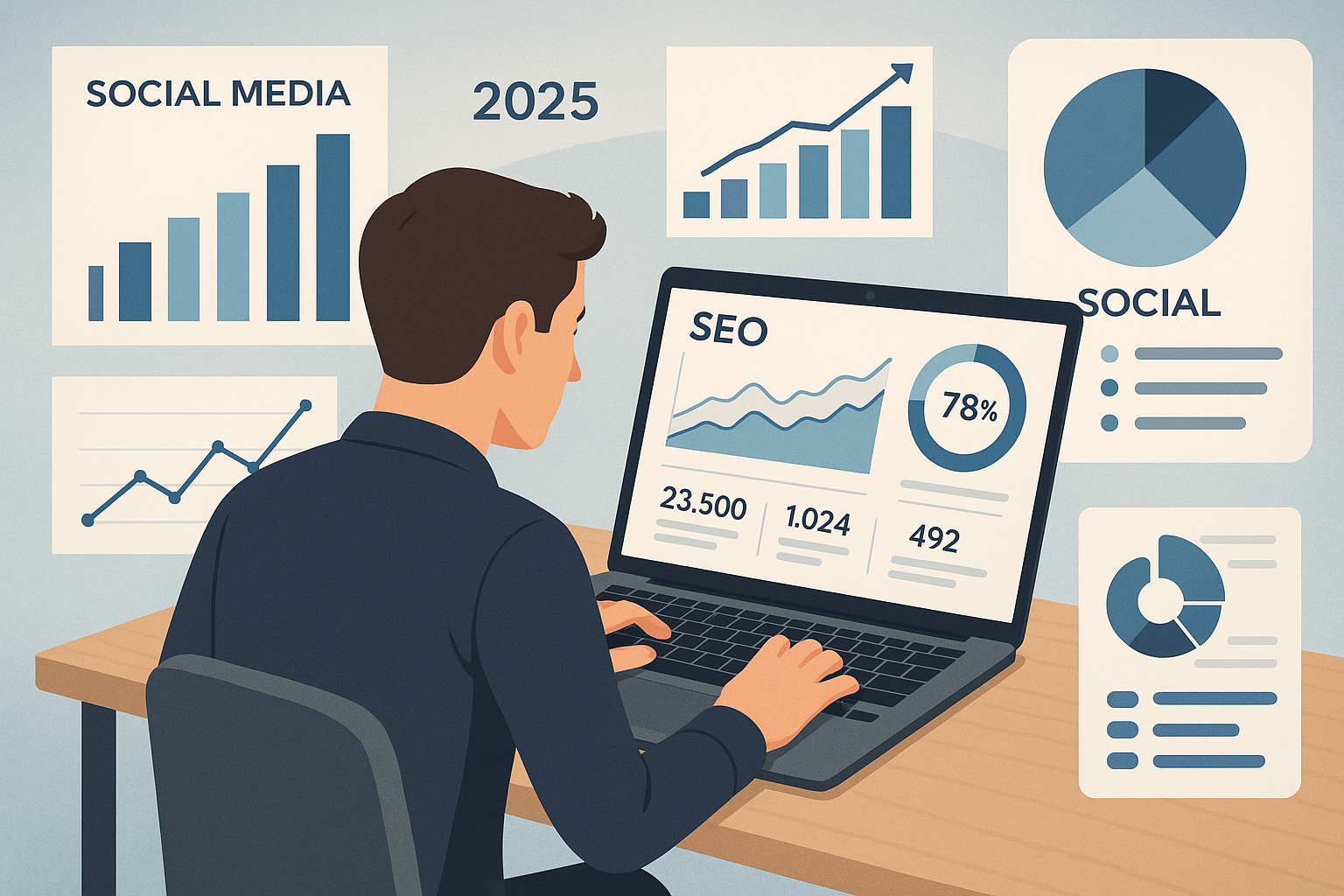Digital Marketing Explained: The Complete 2025 Guide





What Digital Marketing Really Means in 2025
Digital marketing has become more than a buzzword; it is the foundation of how modern businesses connect, convert, and grow. In 2025, digital marketing is essential for any brand that wants to stay competitive. Whether you run a small company or a national enterprise, your audience interacts with you online long before they ever make a purchase. Modern consumers expect discoveries on Google, relationship-building on social media, and personalized campaigns from brands of every size.
The digital landscape evolves quickly. Algorithms shift, trends rise and fade, and customer expectations increase each year. Understanding digital marketing requires a clear, strategic approach. From SEO to automation, every tactic works together in a unified system. To explore the type of work strong digital teams produce, review featured campaigns at Express Media Work Examples.
By the end of this guide, you will understand what digital marketing includes, how to build an integrated strategy, and which tools and metrics drive real growth in 2025.
Understanding the Core of Digital Marketing
Digital marketing refers to promoting products and services through online channels using data, creativity, and technology. It matters because today’s customers spend most of their time online—they search on Google, browse social media, read emails, and explore websites before engaging with a brand.
Key benefits of a digital marketing strategy include:
- Expanding reach beyond traditional marketing
- Delivering targeted advertising that is measurable
- Building customer relationships through ongoing engagement
- Increasing ROI through performance-focused tactics
Many believe digital marketing is just paid ads, but that is a misconception. True digital marketing blends strategy, content, analytics, and creative development. To understand foundational concepts, review industry terminology at Marketing Terms for Beginners.
Mastering the Pillars of Digital Marketing Success
Digital marketing in 2025 is built around several core pillars that work together to attract, nurture, convert, and retain customers.
Search Engine Optimization for Sustainable Growth
SEO is the backbone of digital marketing. It ensures your website appears when customers search for your services. Effective SEO includes optimizing page titles, headers, and meta descriptions, creating authoritative content, improving technical performance, and earning links from credible sites. For deeper SEO insights, explore expert resources at Search Engine Land and Neil Patel.
Content Marketing That Educates and Converts
Content marketing positions your brand as a trusted advisor. It includes blog posts, social content, guides, landing pages, and videos that help prospects before offering them a product. This method builds trust, increases organic reach, and strengthens your overall marketing ecosystem.
Social Media Marketing That Builds Community
Social platforms prioritize real relationships and interactive content. Effective strategies focus on short-form video, personalized posts, and community engagement. For guidance on platform trends and best practices, explore insights at Sprout Social. To see how professional agencies manage multi-platform content, check Express Media Services.
Pay-Per-Click Advertising for Instant Visibility
PPC advertising generates immediate traffic using platforms like Google Ads, Meta Ads, and LinkedIn Ads. Retargeting campaigns convert visitors who did not buy or inquire the first time.
Email Marketing Automation for Retention
Automation allows brands to personalize content, deliver behavior-triggered emails, and segment lists. Well-structured email flows increase conversions, improve retention, and guide users throughout the buying journey.
Data Analytics That Drive Smarter Decisions
Analytics tools reveal which campaigns work, which audiences convert, and which channels have the highest lifetime value. Performance data guides smarter budgeting and sharper messaging. Creating dashboards in GA4 or CRM systems helps track KPIs in real time. For agency analytics examples, view Express Media Client Case Studies.
Applying Digital Marketing Across Industries
Digital marketing adapts to organizations of all sizes and across every industry.
Case 1: Local Retail in the U.S.
A small boutique uses SEO and Google Business optimization to rank for local search terms. With Instagram Reels and PPC support, they triple in-store traffic and increase online orders by more than 60%.
Case 2: SaaS Company Expansion
A software company partners with a digital marketing strategist to scale content marketing and LinkedIn ads. Automation and lead scoring reduce cost per acquisition by 35%.
Case 3: Healthcare Provider Growth
A medical clinic introduces PPC campaigns and analytics reporting to streamline appointment scheduling. Engagement increases by 40% within three months.
Top Digital Marketing Best Practices for 2025
Winning brands in 2025 use a blend of creativity, data, and consistency. Best practices include:
- Use AI-driven insights to improve strategy
- Build omnichannel consistency across all platforms
- Prioritize privacy and data transparency
- Create interactive content like quizzes and calculators
- Track KPIs that align with business objectives
Whether exploring digital marketing packages or working with a coach, these principles support long-term success.
Bringing It All Together
Digital marketing is fast-evolving. The brands that succeed in 2025 stay agile, creative, and data-informed. The framework remains the same: attract, engage, convert, and retain. To strengthen your strategy or explore professional support, review Express Media Work Examples and Services.
Frequently Asked Questions
1. What is digital marketing in simple terms?
Promoting your business online using SEO, social media, email, and paid ads to reach potential customers.
2. How much should a U.S. business spend on digital marketing?
Most companies budget around 7–10% of revenue. Startups often invest more during rapid growth phases.
3. What are the most effective digital marketing channels in 2025?
SEO, social media, email marketing, and AI-driven personalization.
4. Can small businesses compete in digital marketing?
Yes. Local SEO, targeted PPC, and community-focused content allow small brands to compete with larger companies.
5. How do I measure digital marketing success?
Track metrics like ROI, conversion rate, engagement, and traffic quality using analytics dashboards.








